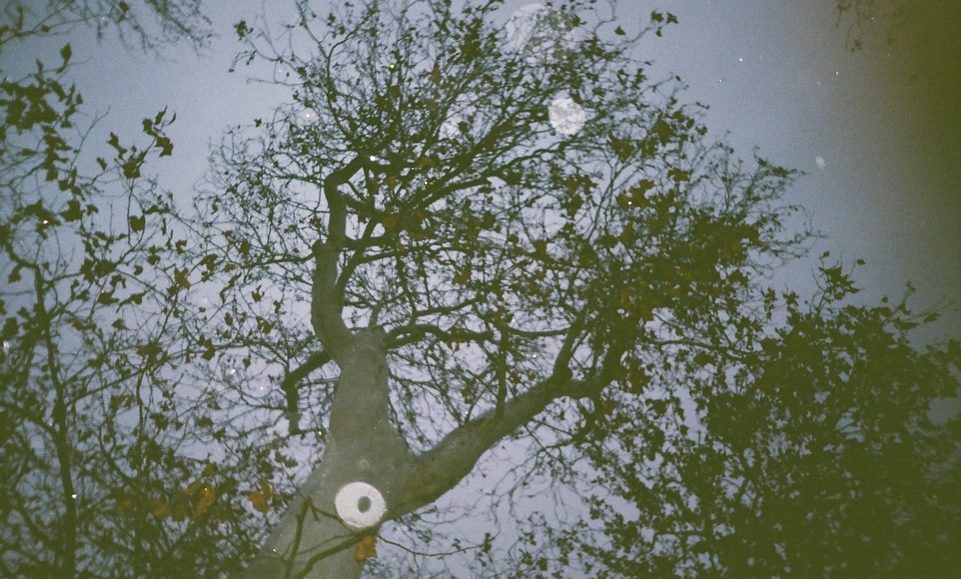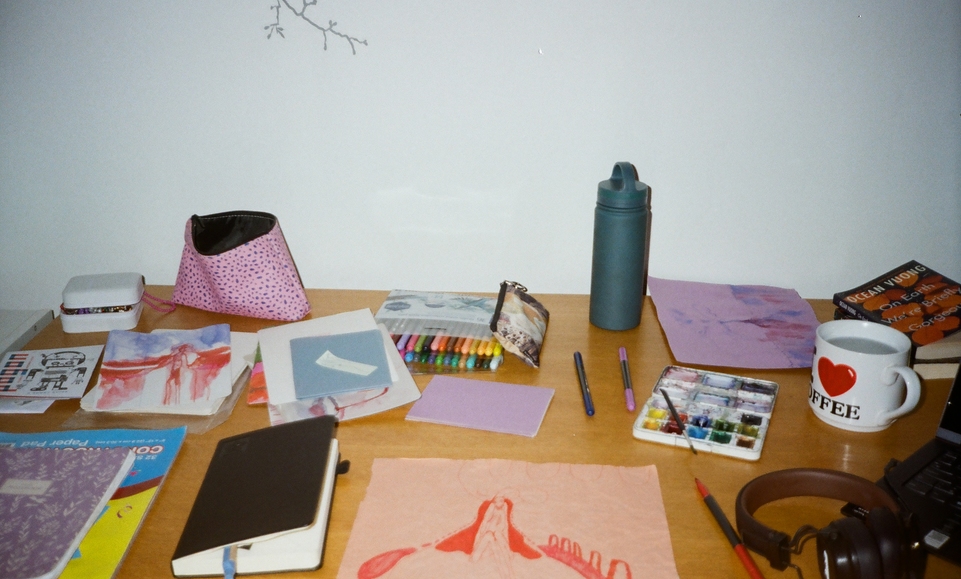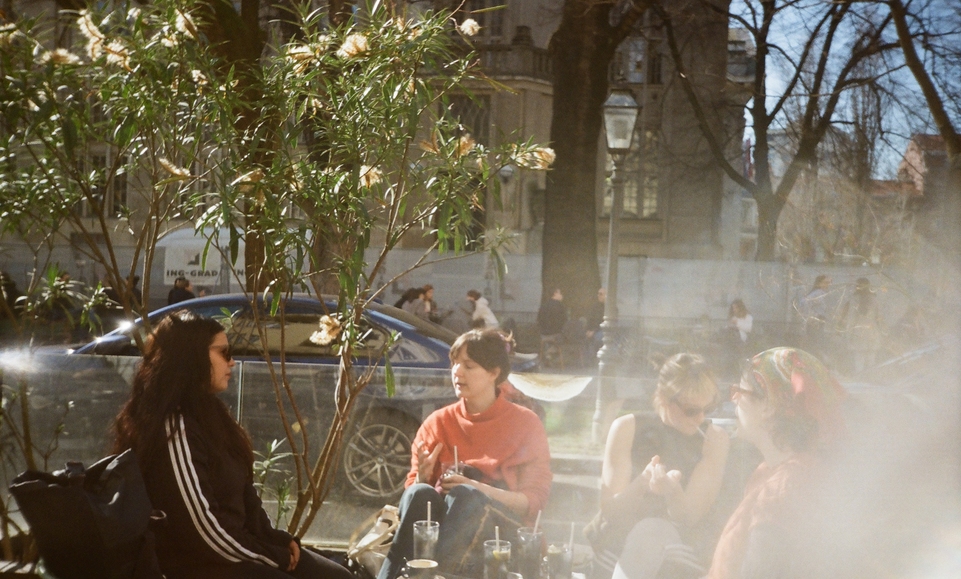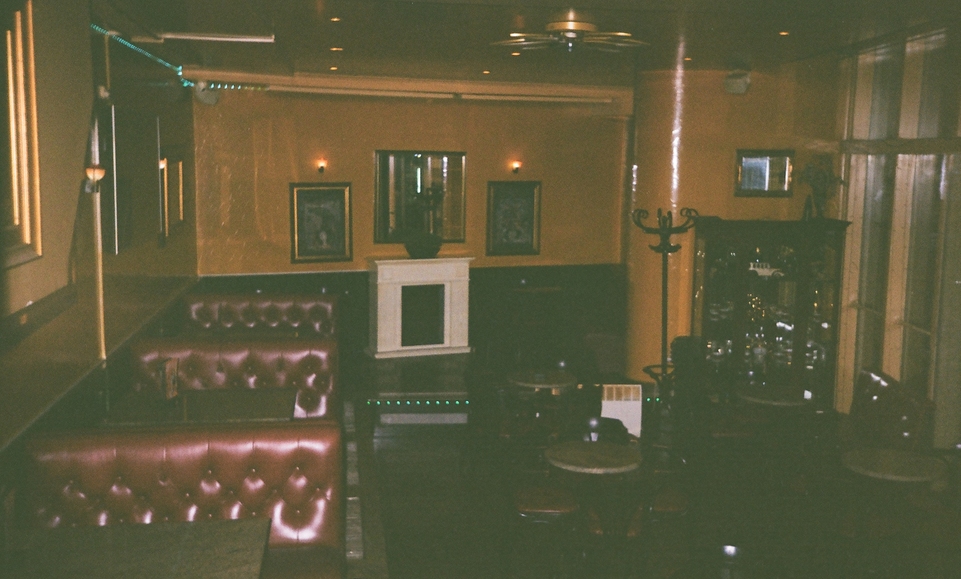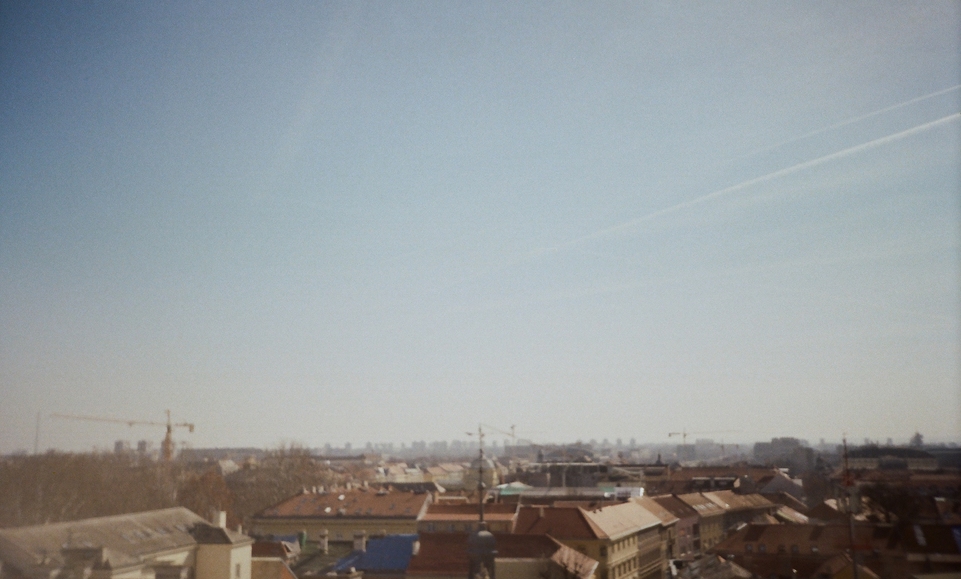This week, I found myself rethinking my work constantly. With the exhibition approaching, I kept shaping and reshaping my piece, questioning how it fits with my position as a Kosovar artist, within this residency, within this space, within the broader discourse I’m engaging with. This process is revealing—I get to explore myself through it, but also the structures around me. I thought a lot about opportunities, exposure, cultural space, and access—what they mean, and who they are truly meant for. It was a reflective week, filled with reminders of my position, my geo-political reality, and the layered barriers that shape how art circulates.
The residency is moving fast. It feels like I just arrived, and yet now we’re entering the final week. Now, the names, places, and structures of Zagreb’s cultural scene are no longer abstract ideas but familiar reference points. I’ve been able to trace patterns, recognize dynamics, and situate myself more clearly within this independent art landscape.
At Kontejner, we met with Tereza Teklić and Davorka Begović, who spoke about the organization’s history and their approach. They have been active since 2002, and only recently secured a space of their own. Despite their long presence in the scene, they still had to find, rent, and invest in a space. They made it work by securing a longer lease contract, allowing them to make real investments in a rented building.
Their program was impressive, especially their approach to festival organizing as a way of using public and alternative spaces before they had one of their own. It’s a clever strategy, working within and outside institutional limitations, adapting where necessary. Their work in contemporary sound and experimental music also stood out, showing a commitment to expanding artistic discourses.
On Wednesday we visited WHW (What, How & for Whom?) and met Ana Kovačić from the collective. We discussed WHW Akademija and its program—something I was already familiar with since I had applied for it a few years ago. I didn’t get in at the time, but revisiting it now in a different way made me reflect on how we engage with structures at different points in time, and how rejection sometimes allows for distance, for perspective, for return.
One thing I liked was how they maintain strong connections with their alumni, creating not just an educational structure, but an ongoing network of collaboration and support. We also discussed Galerija Nova a city owned gallery they run, the space of which they unfortunately no longer have. Their workspace now, located on the top floor of a building in the city center, had an incredible view of Zagreb, a panoramic perspective of the city I had been navigating for three weeks. Throughout the residency, we’ve been receiving various publications and booklets from the spaces we visited. I’ve been collecting the ones in English and was especially excited to get a copy of "Artistic Ecologies" from WHW, a publication I look forward to diving into.
Thursday morning was one of those days where everything felt uncertain, where I questioned everything: art, my practice, my direction. What am I doing? Where is this going? These thoughts lingered in my mind until we visited Block, where we met Ana Kutleša and Dunja Kučinac. It was one of the most inspiring encounters of this residency. Block has been running since 2001, focusing on archiving, education, and activism, things that deeply resonate with me. Their work addresses labor conditions in the arts, workers’ rights, and the reality of cultural exploitation, topics that are often normalized, ignored, or seen as inevitable.
They had a political approach to art-making and community engagement. They talked about the importance of workers' rights in cultural fields, and I kept thinking about self-exploitation in the arts, how much we work without pay, how often we justify it, and how it has become so deeply normalized. Something that I know and I guess I don’t question as much as I should!
Another thing that resonated with me was their connection to their neighborhood and local community. This connection with the neighborhood I also see in Kosovo. Their neighborhood museum project was particularly inspiring, showing how archiving, storytelling, and socially engaged practices can reshape cultural collective memory and representation. In their Political School, their approach was to challenge traditional methods of learning, making theory more accessible to artists and students—breaking away from institutionalized academic language that often isolates rather than includes.
Now that we’ve entered the final week, it feels like the residency passed too quickly. There’s still so much to process, so much I wish I had more time to explore. I wish I had more time to sit with everything, to reflect on what I’ve learned, to let the impressions settle.

